
Volcanoes, gorillas, and triumphant concord


There is a land where towering ancient volcanoes serve as the playground of critically endangered eastern lowland gorillas, where a heroic drive for preservation overcomes war & tragedy, and where hope drives cautious concord in the name of conservation. Set near the western bank of Lake Kivu and the Rwandan border, Kahuzi-Biega National Park emerges as a biodiversity bonanza and a testament to the resilience of conservation efforts in the Democratic Republic of the Congo.
Kahuzi-Biega plays a crucial role as a haven for the largest of the gorilla species – the critically endangered eastern lowland gorilla (also known as Grauer’s gorilla), which, together with its unique biodiversity, earned it the designation as a UNESCO World Heritage Site in 1980. Kahuzi-Biega officially opened its gates to tourism in 2015, revealing the hidden treasures within its lush tropical heart. Today, it is steadily earning its stripes as a destination for gorilla trekking, and conservationists are working hard to quell the status the park earned in 1997 as a region on the List of World Heritage in Danger. Though political instability remains a challenge to tourism growth, Kahuzi-Biega is a realm of giants and songbirds, where visitors, under the watchful eye of guides, can explore the untouched. Kahuzi-Biega’s allure lies in its hidden corners, where biodiversity and adventure converge.
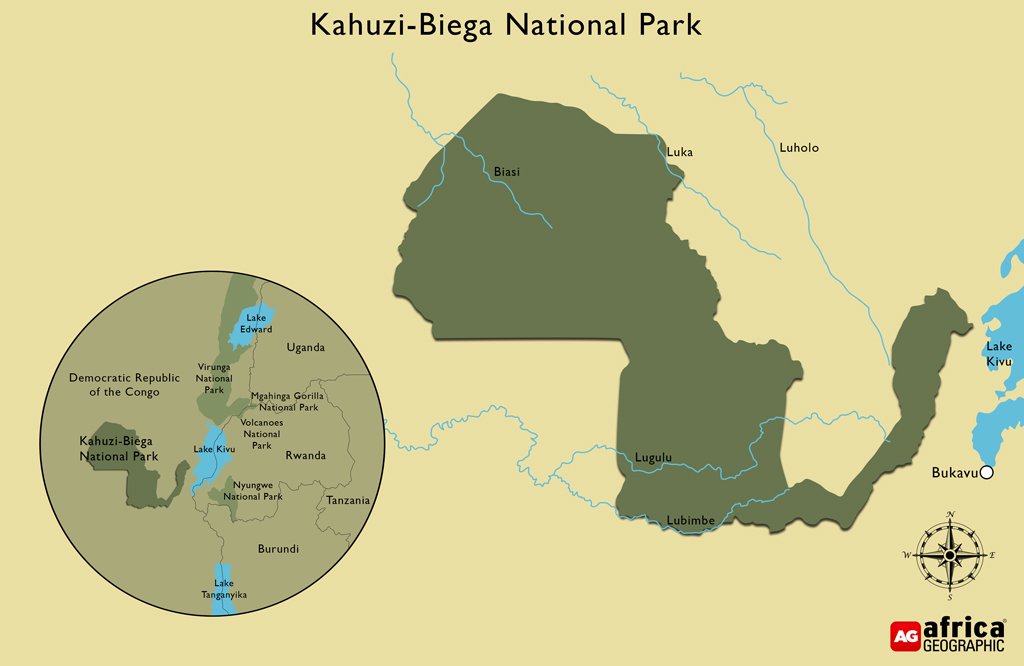
Kahuzi-Biega’s past challenges and present treasures
Established in 1970 by the visionary Belgian photographer and conservationist Adrien Deschryver, Kahuzi-Biega was a response to the urgent need for the preservation of the eastern lowland gorilla or Grauer’s gorilla (Gorilla beringei graueri), a subspecies classified as Critically Endangered on the IUCN Red List since 2016.
Deschryver proved to be a dedicated and successful primate specialist, and he pioneered and developed many of the ideas and methods used in primate habituation. Interestingly, without knowing or ever meeting one another, the world-renowned Dian Fossey was developing her approach to studying gorillas at the same time. While the two had very different approaches to habituation, they both enjoyed tremendous success in the field and paved the way for subsequent primate studies. This adds an intriguing historical layer to the park’s origins.
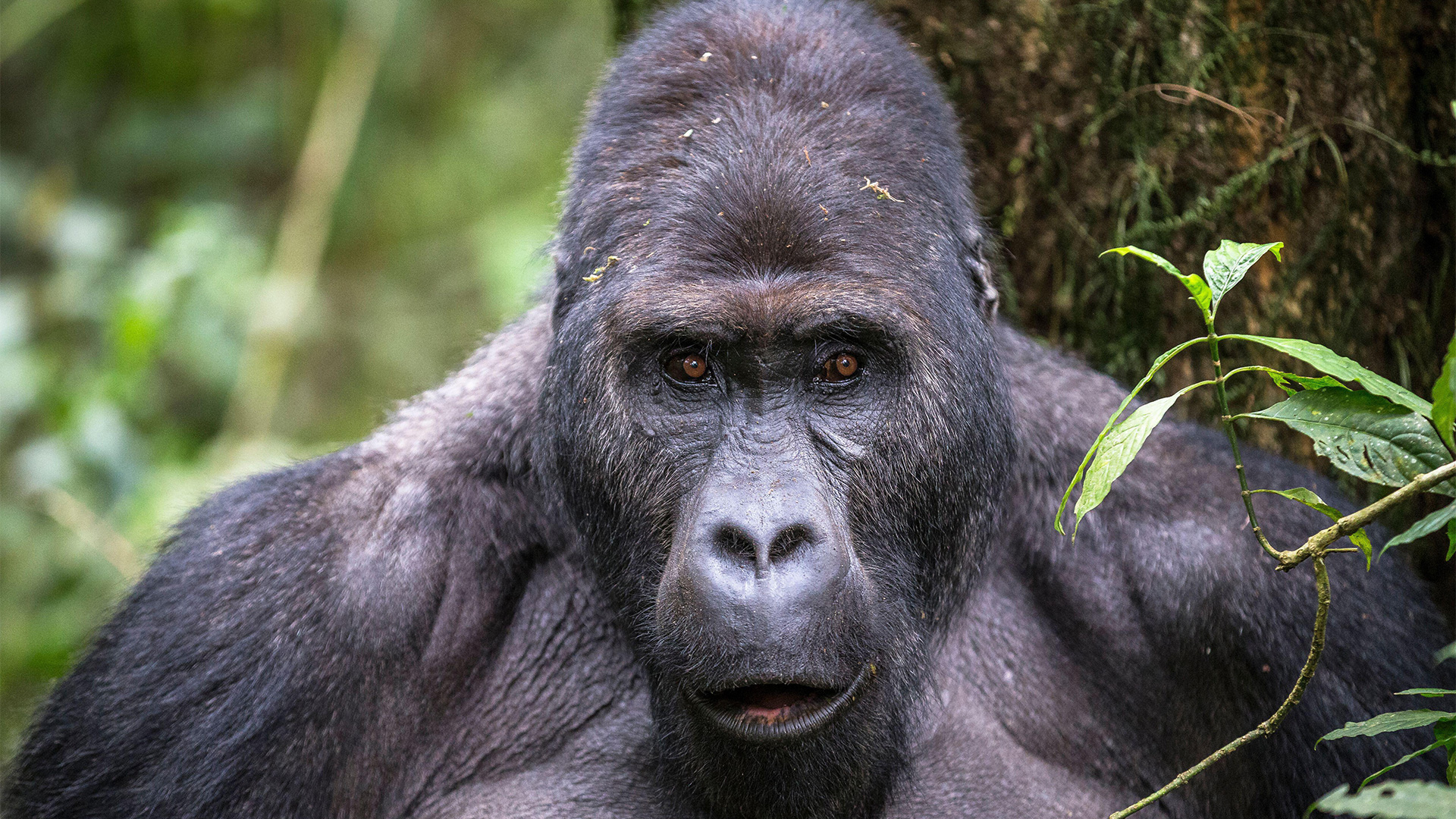
In the 1990s, armed conflict threatened the integrity of the park, and an influx of refugees to the area and political instability spiked while wildlife exploitation escalated. Rebel forces took control of the region, and rangers operating in the park had to forge working relationships with rebels in order to continue their conservation work.
By 2015, due to various efforts by conservation organisations, security forces, the governing party and UNESCO, the situation in the park had improved and it was opened to tourism. The Democratic Forces for the Liberation of Rwanda (FDLR) rebel group was no longer active in Kahuzi-Biega, several local rebel groups had surrendered, many illegal mining quarries were closed down, and a census of the park’s wildlife was underway.
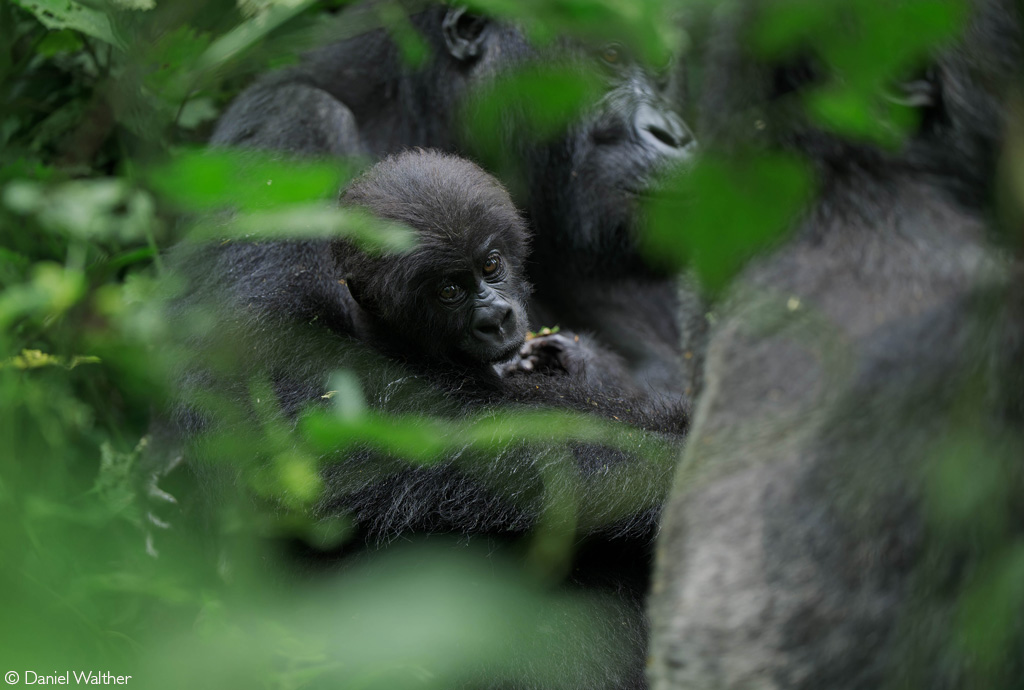
While political instability continues in the region today, the park is closely monitored under the watchful eye of Congolais pour la Conservation de la Nature (ICCN) and the Wildlife Conservation Society. The eastern parts of the DRC remain tumultuous, and rebel activities, illegal mining and lumbering activities are challenges to tourism growth in the park. Against all odds, however, gorilla trekking continues in Kahuzi-Biega, and security agencies collaborate with ranger guides to keep law and order around the forest. For this reason, working with a trusted and experienced safari company is imperative when considering travelling to the park.
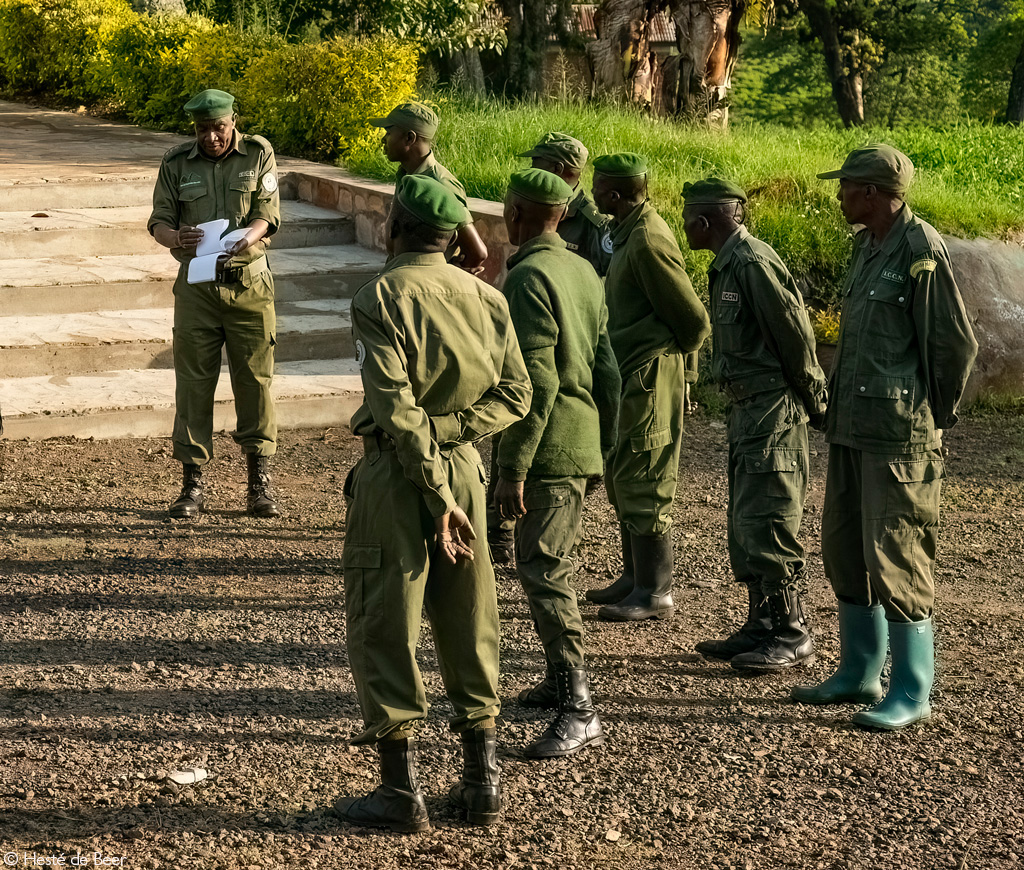
The park remains a living testament to the persistence of conservation endeavours, symbolised by the dormant volcanoes that grace its landscape. Despite the challenges it has faced over the years, including a tumultuous political climate, the park remains a beacon of hope for the preservation of both its unique rainforest habitat and the enigmatic eastern lowland gorillas.

Of volcanoes and other-worldly vegetation
Spanning a vast 6,000km2, Kahuzi-Biega is one of the largest national parks in the DRC. It is revered as one of Africa’s (and the world’s) foremost diverse regions. The lush expanse seamlessly transitions between lowland and highland ecosystems, offering an immersive experience into the heart of the Albertine Rift, with a corridor connecting the mountainous and lowland terrains.
The park encompasses two dormant volcanoes – Mount Kahuzi, soaring to 3,308m, and Mount Biega, at 2,790m. The park is divided into two distinct regions: the accessible highland sector in the east and the untouched lowland sector in the west, which is closed to visitors. The eastern mountainous region spans 600km2, while the vast western lowland region, stretching from Bukavu to Kisangani, covers 5,400km2.
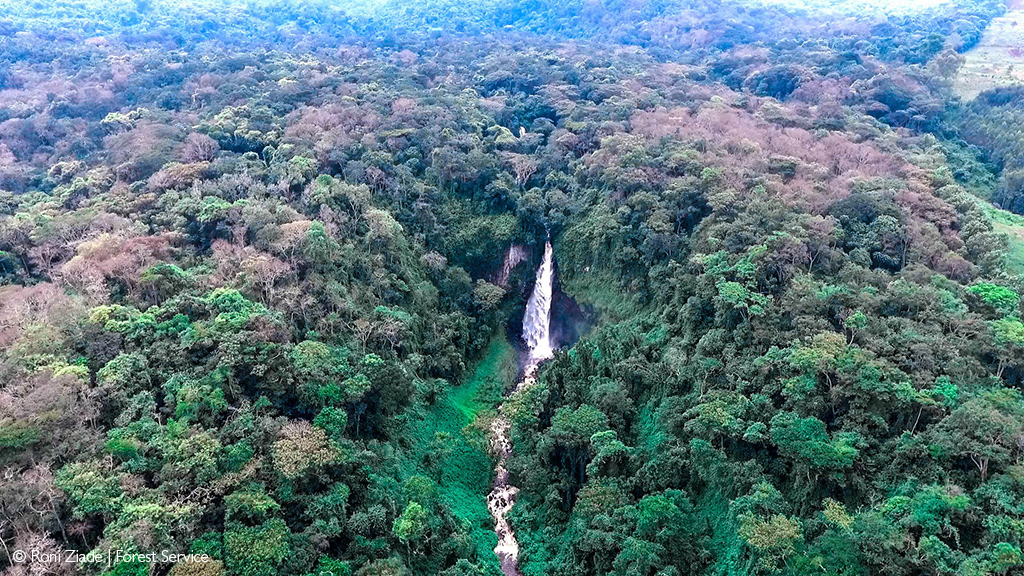
With six distinct primary vegetation types, the park encapsulates a spectrum of ecological diversity from the steamy swamp and peat bogs to the grandeur of high-altitude mountain rainforests, bamboo forests, and subalpine heather. Notably, alien-looking giant groundsels (Dendrosenecio erici-rosenii), flowering plants adapted to high-altitude living, stand tall on the summits of Mount Kahuzi and Mount Biega, reaching 9m tall and proudly piercing the summit clouds.
The highland region alone boasts over 1,178 plant species, establishing the park as a hotspot of plant endemism. Even more remarkable is that it showcases a complete and unbroken transition from lowland through highland vegetation, something very rare anywhere in the world today.
 Want to visit Kahuzi-Biega National Park? Check out our safaris to Kahuzi-Biega here, or let our travel team plan your safari. Alternatively, check out all of our gorilla trekking safaris here.
Want to visit Kahuzi-Biega National Park? Check out our safaris to Kahuzi-Biega here, or let our travel team plan your safari. Alternatively, check out all of our gorilla trekking safaris here.
For those with an appetite for adventure, the peaks of Mount Kahuzi and Mount Biega stand tall as hiking destinations, offering panoramic views and perspective on the park’s vegetation, wildlife, neighbouring communities, and even neighbouring countries. However, the hiking trails along these mountains are quite primitive, and they are mostly used by rangers patrolling the park.
The wild things of Kahuzi-Biega
Embarking on a journey through Kahuzi-Biega National Park allows one to explore a mosaic of experiences, from the enchanting world of birding to encounters with majestic lowland gorilla families. As you navigate this ecological wonderland, be prepared to be captivated by the diverse attractions that unfold at every turn.
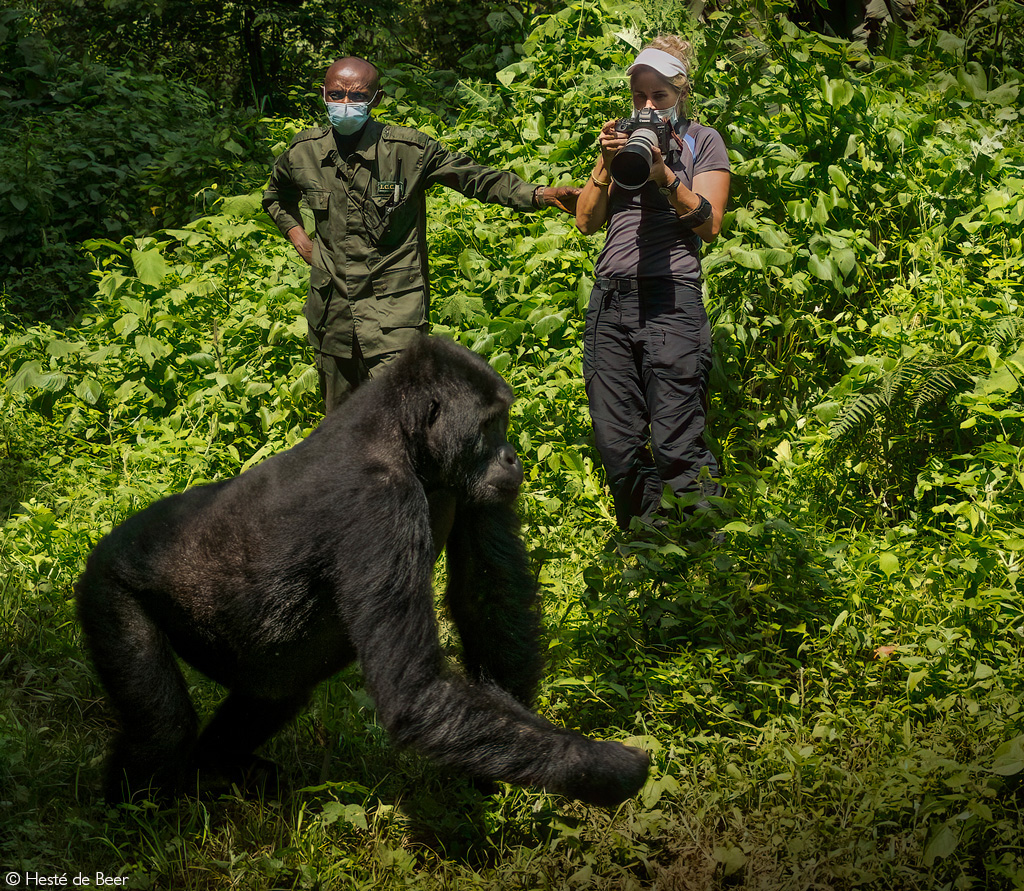
Surveys conducted by the Wildlife Conservation Society over the years revealed that at least 349 bird species and 136 mammal species call Kahuzi-Biega home. In every leaf, every rustle, and every glimpse of a rare species, Kahuzi-Biega National Park unfolds as a living testament to the intricate interplay of ecology and life. For avid bird enthusiasts, Kahuzi-Biega beckons with a year-round avian spectacle. The optimal time for birding aligns with the rainy months from March to early May and October to November. During these months, the park is alive with an array of resident and migratory bird species drawn by the abundance of food. While the trails will be challenging at this time, with mud and slippery paths making progress difficult, the reward is to experience the full diversity the habitat offers.

Alternatively, the dry season, spanning June to September and December to February, unveils a different charm. With reduced rainfall, dry trails, and sparser vegetation, this season offers clear views of bird species against the backdrop of the park’s verdant landscape. The roads to the park become more accessible, providing an opportunity for unhurried exploration.
While the diversity of flora and fauna is incredible, the park’s flagship species is clearly the elusive eastern lowland gorilla, which captivates visitors’ imaginations. Exact numbers are difficult to estimate, but the highland region alone is a crucial stronghold for conserving these endangered primates. Distinguished by their thick bodies, large hands, and short muzzles, eastern lowland gorillas are often overshadowed by their mountain gorilla relatives. But Kahuzi-Biega’s gorillas play a crucial role in maintaining the ecological balance of their habitat. Recognising the significance of eastern lowland and mountain gorillas adds depth to our understanding of these incredible creatures, emphasising the importance of comprehensive conservation efforts across their diverse habitats.
The habituation work that Deschryver started paid off as early as 1973 when the first limited gorilla treks took place in the park. Since then, several groups have become accustomed to humans, allowing intimate glimpses into their family lives. Trekkers will be charmed by individual personalities, etching lasting memories amidst the dense forest vegetation. In the interests of exemplary conservation, many families have been left strictly alone and are still wild and unapproachable.
Gorilla treks traverse various trails, depending on where the groups slept the previous evening. This means a trek can take anything between 30 minutes and five hours, culminating in a precious hour spent in the presence of these magnificent creatures. As you stand in their midst, time seems to pause, allowing you to absorb the profound connection between humans and the giants of Kahuzi-Biega National Park.
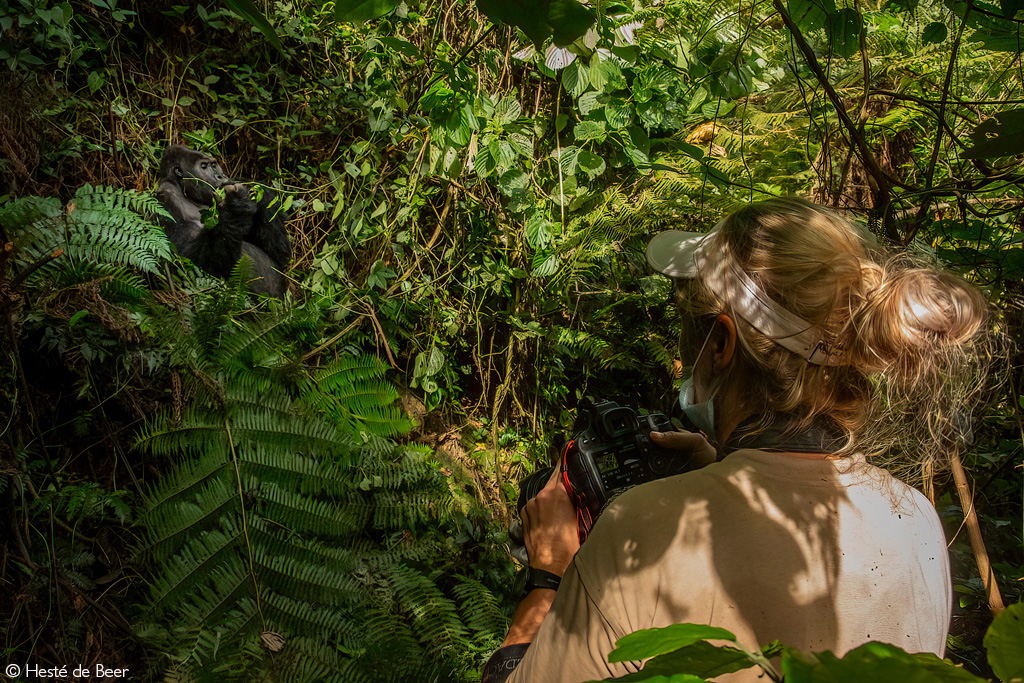
Among the other primates that grace the park are eastern chimpanzees, Angolan (black and white) colobus, blue monkeys, Dent’s mona monkeys, red-tailed monkeys, Hamlyn’s (owl-faced) monkeys, and olive baboons. After the sun sets, Bosman’s potto and the eastern needle-clawed bush babies emerge, adding a touch of nocturnal mystery to the park’s ambience.
Kahuzi-Biega surpasses any other national park in the Albertine Rift for mammal diversity. The dense forest vegetation may also reveal glimpses of the elusive bongo and the giant forest hog for the fortunate traveller. In the realm of the unique, Alexander’s and Thomas’ squirrels, the enigmatic aquatic civet, giant forest genet, Maclaud’s horseshoe bat, and Rwenzori otter shrew call Kahuzi-Biega their home.
Resonating through the park is a chorus of at least 349 identified bird species, of which at least 42 are endemic to the region. While the intelligent grey parrot may be spotted among the forested canopies, and the elusive Shelley’s crimsonwing may bless very lucky seekers with a sighting, the Congo peafowl steals the spotlight with its vibrant plumage, adding a touch of avian flair to the panorama.

Some treasures you may tick off here are Grauer’s and African green broadbill, Grauer’s swamp warbler, Rockefeller’s sunbird, yellow-crested helmetshrike, Albertine owlet, and the white-naped pigeon. The list of captivating species is long, with black-billed, Rwenzori, and Ross’s turacos, blue-headed coucal, blue malkoha, bar-tailed trogon, white-headed wood hoopoe, Petit’s cuckooshrike, Lühder’s, Doherty’s, and Lagden’s bushshrikes, mountain illadopsis, and multiple resplendent sunbird species all adding to the excitement of birding in this remarkable region.
Delving into the pages of bird books, one quickly realises the incredible diversity that graces Kahuzi-Biega’s skies – a testament to the park’s commitment to preserving not only the charismatic megafauna but also the delicate and vibrant ecosystems that support this remarkable array of life.

Explore & stay in Kahuzi-Biega
As you prepare to immerse yourself in the untamed beauty of Kahuzi-Biega National Park, a journey that promises encounters with rare wildlife and breathtaking landscapes, a thoughtful exploration plan ensures a seamless experience.
If it’s gorilla trekking you seek when visiting Kahuzi-Biega, it’s important to secure a place on a gorilla trek before travelling. It is crucial first to obtain a trekking permit, which is best applied for at least a month before arrival. When planning a visit to the area, remember to consult reliable travel sources for the latest information on safety, logistics, travel, visa and health advisories, and the status of accommodations.
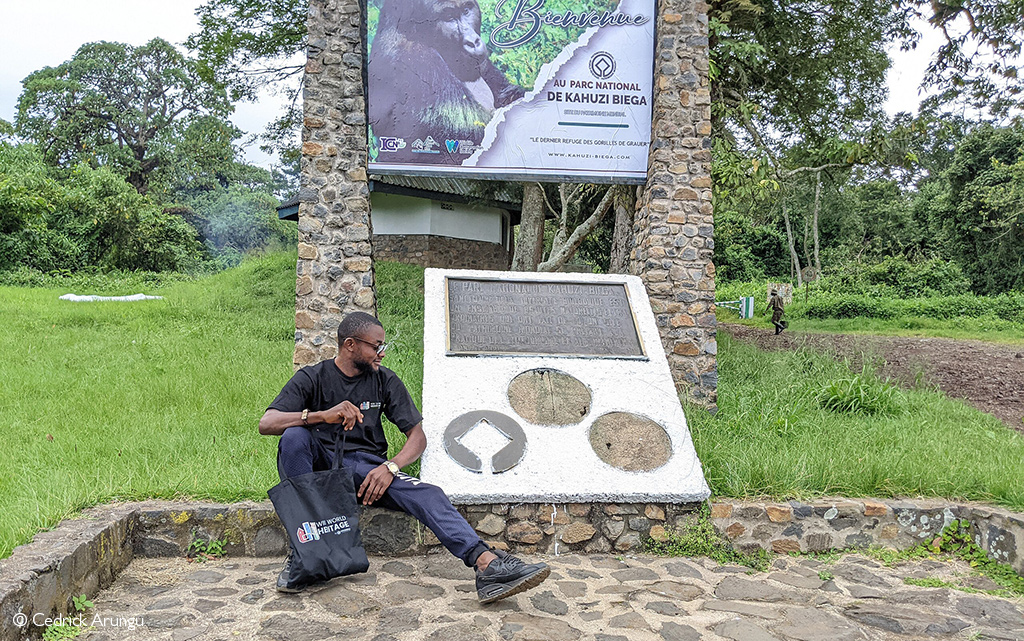
The optimal window to experience Kahuzi-Biega’s wonders is during the dry season, which extends from late May to September. July and June mark the driest months, accompanied by a slight drop in temperature. While January and February offer shorter dry periods, worry not about avoiding ‘peak tourist season’ in the DRC; crowds are not a concern in this pristine haven.
The journey to Kahuzi-Biega National Park unfolds as an adventure in itself. For those arriving from the Rwandan side of the Rusizi border, the park’s headquarters are approximately 230km away from Kigali International Airport, entailing a 5–7 hour drive. Roads in the area are challenging, and one may expect some exciting moments along the way! Alternatively, for luxury and efficiency, travellers can charter a light aircraft from Kavuma Airfield or Entebbe, Uganda.
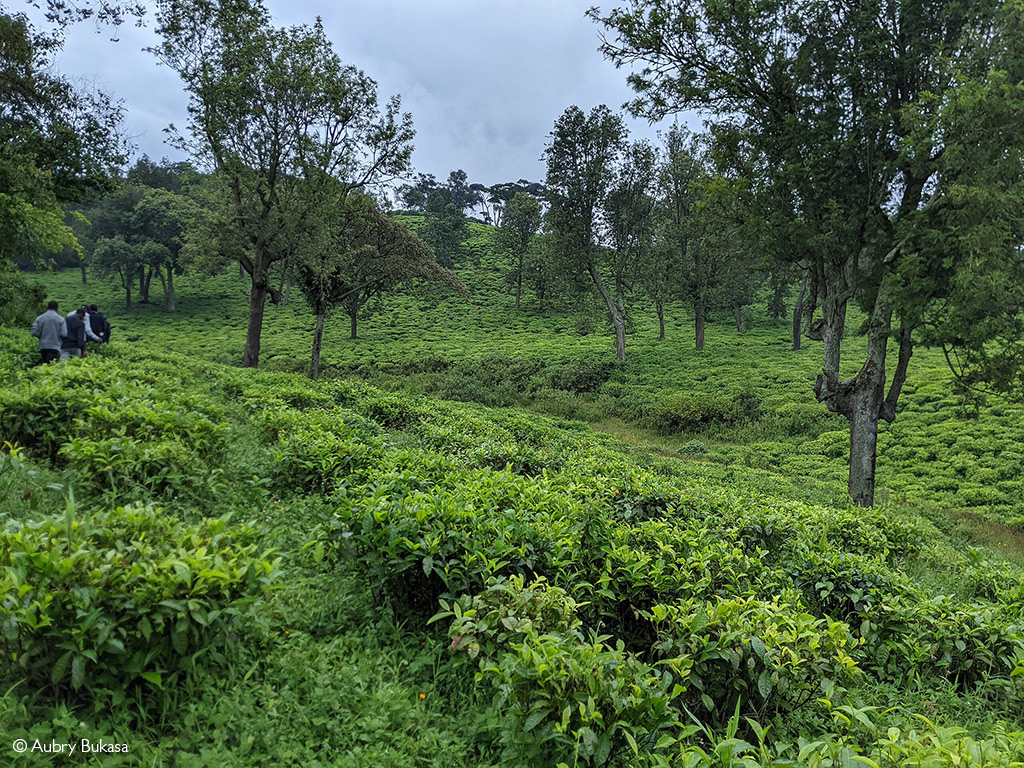
Bukavu is the closest town to the park, where accommodation is available, ranging from basic to luxuriously comfortable, and catering to diverse preferences and budgets. These accommodations provide a pleasant base for your explorations and offer glimpses into the local culture and hospitality.
The journey to Kahuzi-Biega transcends a mere visit – it becomes a holistic experience where the thrill of exploration blends with moments of relaxation and rejuvenation. Kahuzi-Biega National Park welcomes you not just as a spectator but as a participant in its ongoing narrative of conservation and appreciation for the wonders of the natural world.
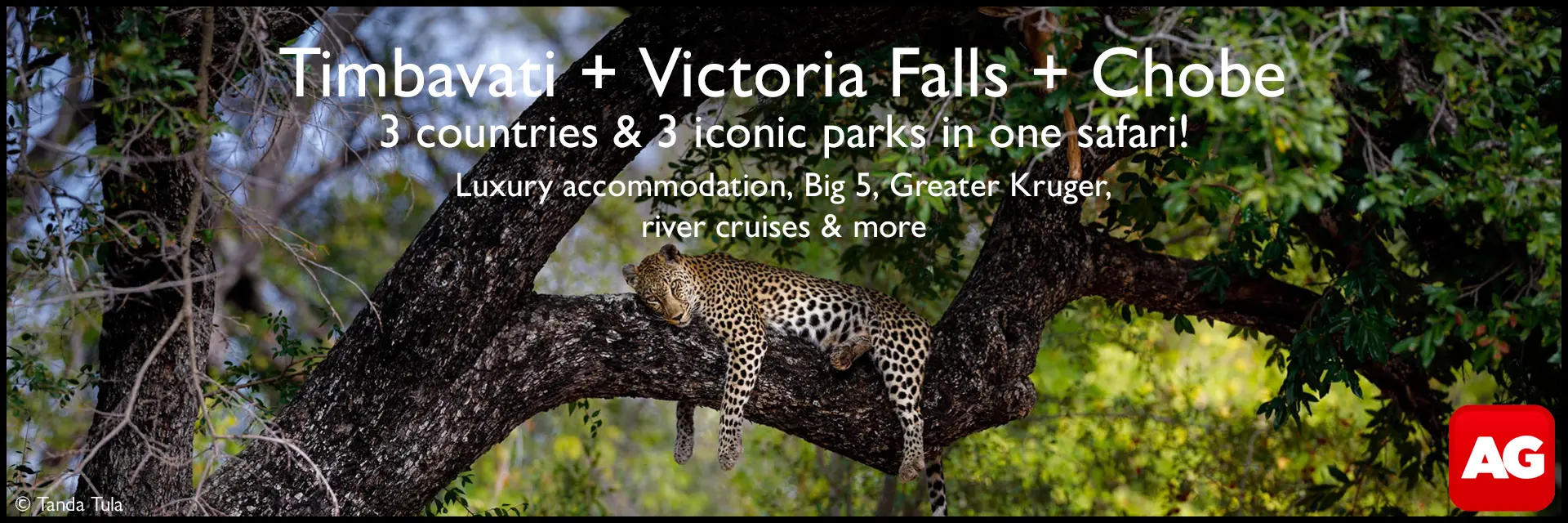
Further reading
- Discover more about Virunga National Park, a gorilla-trekking destination and UNESCO World Heritage Site, renowned for its unparalleled biodiversity. Rainforests, gorillas, endemic birds, bubbling volcanoes, and safari favourites await. Read more about Virunga here.
- Volcanoes National Park is another leading gorilla trekking destination in Africa. This volcanic landscape offers stunning scenery & biodiversity. Read more about Volcanoes NP here.
- Read about one family’s safari adventure with AG to Kahuzi-Biega National Park, Rwanda and Mafia Island in search of primates, bats & other weird and wonderful creatures here.
To comment on this story: Login (or sign up) to our app here - it's a troll-free safe place 🙂.![]()




